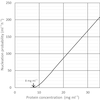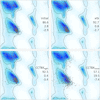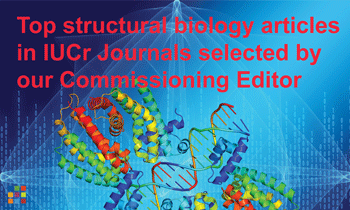issue contents
December 2020 issue

Cover illustration: High-performance macromolecular data delivery and visualization for the web [Sehnal et al. (2020), Acta Cryst. D76, 1167-1173] is demonstrated here by the Mol* visualization of faustovirus (PDB entry 5j7v). The faustovirus assembly has 40 million atoms. A naive approach requires 480 MB of memory to represent the XYZ positions as 32-bit floats. The advanced data structures in Mol* allocate only 50 MB of memory to represent and visualize the whole structure by utilizing the 2760-fold symmetry of the structure.
CCP4
Open  access
access
 access
accessThe geometry of arginine shows more complexity than is accommodated by the standard restraints.
Open  access
access
 access
accessThis article provides a survey of available web services and tools for data delivery and visualization of macromolecular structures.
ISDSB2019
Open  access
access
 access
accessA semi-empirical model to estimate the optimum conditions for the growth of large protein crystals has been developed.
research papers
The implementation of quantum-based real-space refinement in qr.refine is described.
Open  access
access
 access
accessShift-field refinement is an approach to the refinement of a model against a set of structure-factor observations which is not tied to an underlying atomic parameterization. The performance of the method is evaluated for the refinement of positional parameters over a set of 452 molecular-replacement problems.
AjiA1 is an adenylate-forming enzyme (AFE) family member that catalyzes the condensation of two molecules of 3-hydroxyanthranilic acid using ATP as a co-substrate. The structure of AjiA1 in its apo form was solved and revealed key conformational changes, including an unusual loop swapping, suggesting that it should be classified into a new AFE subgroup.
PDB reference: AjiA1, 6wuq
This article provides an in-depth analysis of structural aspects of the heme-bound structure of indoleamine 2,3-dioxygenase 1 with a complete refined JK-loop (the overall crystal structure, the quality of the structure, the dimerization interfaces and an analysis of the JK-loop conformation) followed by a molecular-dynamics study of the influence of heme occupation on the conformation of the JK-loop.
PDB reference: indoleamine 2,3-dioxygenase 1, 7a62
Open  access
access
 access
accessA novel three-residue tag containing the residues GHK that can be used to promote crystallization and in SAD phasing experiments using its tightly bound copper ion is described.
Open  access
access
 access
accessTwo investigated DNA 18-mers indicate a dynamic equilibrium of conformations in solution and crystallize as duplexes with two consecutive T–T mismatches. Neither these mismatched nucleotides nor others found in the PDB exhibit unique structural features compared with Watson–Crick paired nucleotides.
Open  access
access
 access
accessStructural studies of glycoproteins are often complicated by glycan complexity. Here, it is shown that the GlycoDelete HEK293 cell line engineered to produce glycan stumps produces homogeneous glycoproteins that are ideal for crystallogenesis and other structural studies.
Download citation


Download citation


The 1.7 Å resolution crystal structure of peroxisomal multifunctional enzyme type 1 (MFE1) shows a conformation in which both catalytic sites are noncompetent. An analysis of the structures of its complexes with 3-ketodecanoyl-CoA suggests how conformational flexibility of MFE1 could be important for its function.
PDB references: MFE1, HAD-3keto, 5omo; 3keto-3mM-NAD+, 6z5f; single molecule, 6z5o; 3keto-1mM-NAD+, 6z5v
Artificial multifunctional polypeptide constructs (modular nanotransporters, MNTs) have great potential in the treatment of various diseases, particularly cancer. In this study, a low-resolution 3D structure of an MNT in solution was obtained by atomic force microscopy, transmission electron microscopy and small-angle X-ray scattering coupled to size-exclusion chromatography.


 journal menu
journal menu






























